STOP PRESS! a fabulous opportunity to see Dr Rachel Koopmans give an illustrated presentation on the Becket Miracle Window that featured in the British Museum’s Becket exhibition last summer. This window is continuing to give up its secrets and Rachel will highlight some of these aspects, as well as where she and Leonie Seliger wish to go next in terms of the Becket windows.
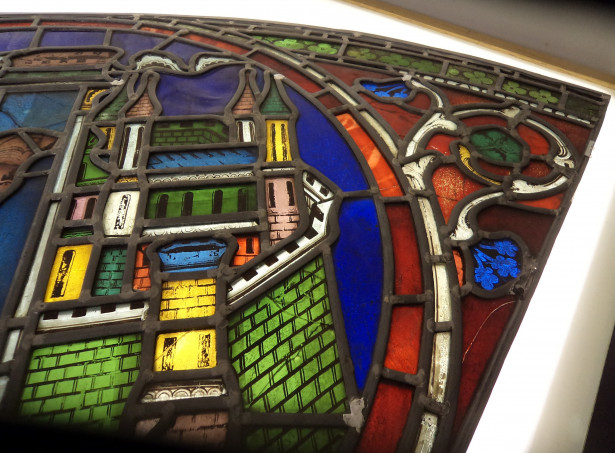
Rachel is currently in Canterbury for a very brief research trip and her talk will take place on Thursday 23 June at 7pm in St Paul’s church, Canterbury. Her title is: ‘What can a Window Tell You? Pilgrimage and People in a Thomas Becket Miracle Window’, which will consider people, including Kent people, as well as places and their representation within these stained glass panels. Having seen several up close and heard some of Rachel’s ideas, I know that her audience will be in for a great treat. We are hoping to livestream it for those who cannot get to this free, public lecture and more details will be available soon. So please to watch out for this and we look forward to seeing some of you in person (booking NOT required, do come along and bring your friends). This is a collaboration between St Paul’s church and the CKHH as a friend of Rachel and Leonie and their great project, and for the benefit of the church we would like to encourage donations from attendees to the lecture.
Another event in June is being organised a recent new member to the Kent History Postgraduates. Alison Norton is working on early castles in the West Country and Kent under Dr Leonie Hicks and she will be holding an online conference on ‘Imaginative Landscapes and Otherworlds’ on 22 June. The aim is to discuss and further explore the relationship between tangible landscapes – those inhabited by people of a particular culture, and imaginary landscapes – projections of possible landscapes. The intention is to allow for a clearer differentiation between material and imaginary interactions within an environment and assist with discerning how these landscapes interacted with each other. If this sounds of interest, please email Alison for the full programme ( alison.norton@canterbury.ac.uk ) and you can book at: https://www.eventbrite.co.uk/e/331806932467 Ali will be delighted to welcome you.
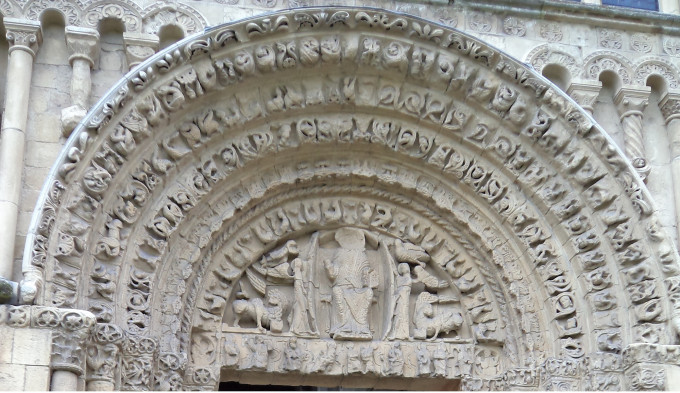
Turning now to Peter Joyce’s presentation to the Kent History Postgraduates group on 27 May, as he said he had created this presentation for the second of Professor Mark Connelly’s Kent History Festivals as part of the University of Kent’s IHR Centenary celebration, but sadly it had been cancelled. However, if something similar took place in future, probably at the Medway Archives Centre, he would be more than happy to give his presentation then. Consequently, the chance to try it out at the Kent History Postgraduates meeting was a great opportunity and we were delighted too. Entitled ‘The House the Rich Built for the Poor’, Peter focused on the workhouses of early modern Rochester and its environs. Although his initial intention had been to concentrate on the S.P.C.K.-controlled workhouses between 1721 and 1776, the latter the year of Gilbert’s ‘Survey of English Workhouses’, he is finding that he is having to look at earlier developments to understand the social history of such provision for the poor that pre-dates the work of the Revd Caleb Parfect, where this study may be said to have begun.
Of course, this area had had hospitals and almshouses during the Middle Ages and he began by giving us a short history of these, starting with St Bartholomew’s that had accommodated both lepers and non-lepers in its early centuries. It is a Norman foundation, albeit not as old as Lanfranc’s twin institutions of St John’s and St Nicholas’ hospitals at/near Canterbury. As you might expect being an episcopal city, Rochester and district was well served by these houses, and like many such institutions in medieval Kent patronage was generally in the hands of laymen and the bishop, not monasteries which meant they were far more likely to survive the Dissolution. Additionally, the Tudor period brought the establishment of new or (refounded) houses, including that by Richard Watts, as well as Sir John Hawkins’ Hospital and into the Stuart period that of Sir John Hayward.
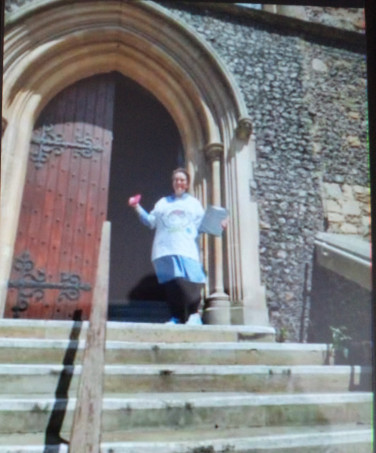
Keeping to the idea of the rich and their involvement in the patronage of such establishments in the 17th and 18th centuries, Peter discussed when the term ‘workhouse’ seems to have come into use in the Rochester area in the 17th century and what were the ideas behind its use for these same patrons and the local authorities – the city corporation and the bishop of Rochester. Among the topics he touched on were the use of badges to identify inmates and the deployment of clothing to further distinguish those who found themselves in these establishments. Also, how such houses were to be run, including the provision for children, boys until they were 18-years of age, girls till they were 16, as well as the use of apprenticeships to ensure such youngsters would become working members of society.
To gain an idea about the day-to-day life of these institutions, Peter highlighted the value of bills from suppliers, there being a fine collection of such evidence for the Six Poor Travellers’ House in Rochester which was part of the Watts Charities. He also drew attention to the four workhouses of Medway that similarly operated in the 18th century, as well as to the identities of those among the super-rich from this period who, as Members of Parliament for Rochester, saw it as their duty to support these mechanisms to aid the local poor.
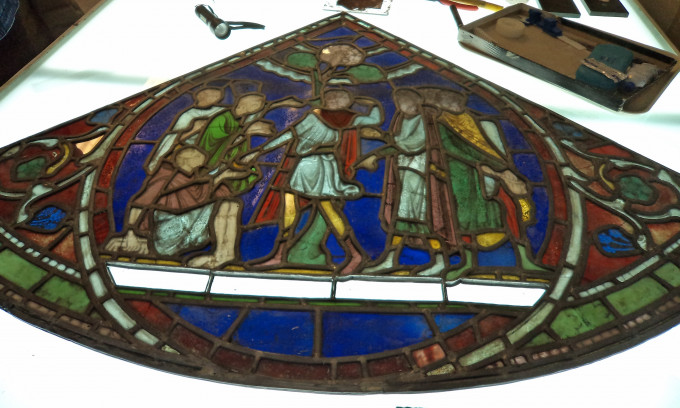
This brought Peter to his section of the presentation on those who found themselves as workhouse inmates. He offered a few examples to highlight the differing reasons people might find themselves in these dire circumstances, and just what this may have meant for families, as well as the plight of single women. This fascinating presentation (thanks Peter) produced a range of questions from the other postgraduates, from has there been any osteoarchaeological investigation of these workhouses inmates to what do we know about the trades of these inmates and what does this tell us about employment opportunities more generally in the Medway region.
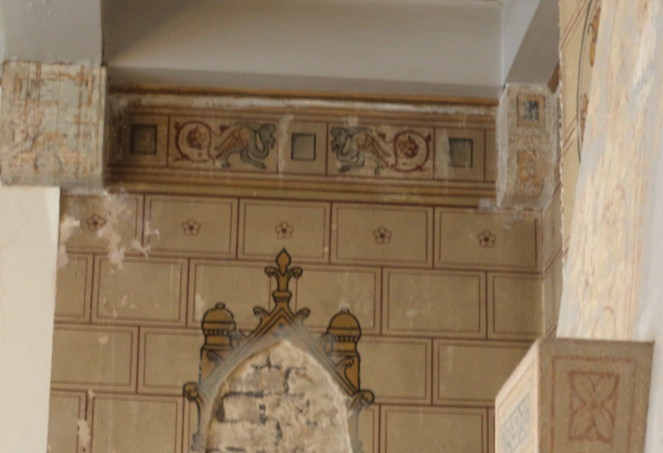
What might be seen as an allied topic in that it involves what had been a medieval hospital, Dr Diane Heath with Penny Bernard were at the Dover Maison Dieu on Saturday 28 April as part of the ‘Medieval Animals Heritage’ project. During the visit conducted by Martin Crowther, the Maison Dieu Engagement Officer, families with SEND children were invited to go hunting for animals in the decorative schemes in several rooms and in the various heraldic devices.
Then last Thursday the CKHH in conjunction with the Friends of Canterbury Archaeological Trust organised a visit to first St Edmund’s chapel and then the Maison Dieu almost next door. We were fortunate that Paul Smye-Rumsby, chairman of the St Edmund of Abingdon Memorial Trust, was able to show the group the chapel and explain its early history as a cemetery chapel for poor pilgrims travelling to and from Canterbury, what happened after the Dissolution and how fortunately it was saved in the 20th century, becoming once again a place of worship.
On crossing over to the Maison Dieu, the group was expertly guided around the first-floor halls and various rooms by Martin Crowther, the whole building being currently part way through a more than nine-million-pound restoration, conservation and research-heritage project that will see the building back in use again as a place to hire through Dover Council and as a place to stay through the Landmark Trust.
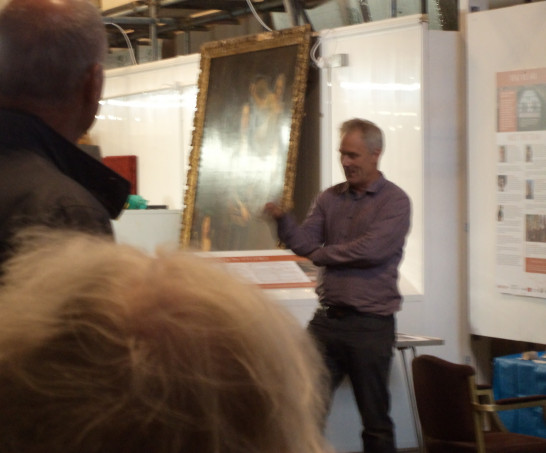
Even though the earliest buildings of this pilgrim hospital have gone, at least above ground level (knocked down in the early 19th century), it is possible to trace the building’s developments in the surviving structure from the 13th to the 21st centuries. There is far too much to describe here but for those interested in the Gothic Revival in Victoria’s reign, the place is an absolute treat having extensive evidence of the work of Ambrose and Edward Pointer, and even more of William Burges. Indeed, Burges was given two opportunities by the civic authorities and on the latter occasion he was commissioned not only to devise the whole decorative scheme but also the furnishings to go with it.
This project is offering considerable opportunities for volunteers to learn new skills, and for a different project – the Kent Archaeological Society and Lossenham project had its 3rd palaeography workshop for beginners last Wednesday evening. We are continuing to work through a fascinating Tudor will made by a woman from Rochester and, like the Maison Dieu project, as well as documentary research skills, the chance to take part in community archaeology is the other part of this project.
Diane Heath, too, has a group of volunteers doing research, and for the ‘Medieval Animals Heritage’ this means translating an early bestiary. Unfortunately, this is at the same time as the palaeography which means I have missed all of Diane’s sessions, but I do hope to get to help at her ‘Green Dragon’ building afternoon next Tuesday in the garden by Becket on the CCCU campus.
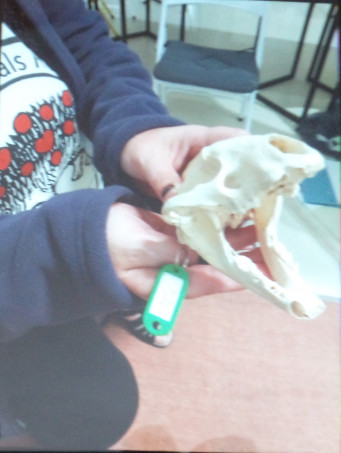
This comes just over a week after she took a group of families with disabled children to Quex Park at Birchington to undertake ‘animal safaris’. As at Dover, they seem to have had a great time and were allowed to handle some animal bones, as you can see in the photo
Although not quite as much of a hands-on approach, I teamed up with Dr Justin Croft last Thursday evening at the ‘Faversham charters and Magna Carta’ new exhibition to provide some ideas about the items on display, as well as some background information on Faversham in medieval times. As well as a good number of volunteers, Louise Bareham the town clerk was there, and she seems to have recruited an excellent team who asked a wide variety of questions during the session. Moreover, if you haven’t yet seen it Dr Claire Bartram’s IHR Centenary Project ‘Imagining Dover’ has been enhanced, so please check it out at: https://blogs.canterbury.ac.uk/kenthistory/imagining-dover/ Thus, the CKHH is extremely busy and this situation is likely to continue over the summer!
 Centre for Kent History and Heritage
Centre for Kent History and Heritage Sheila Sweetinburgh
Sheila Sweetinburgh 1814
1814

